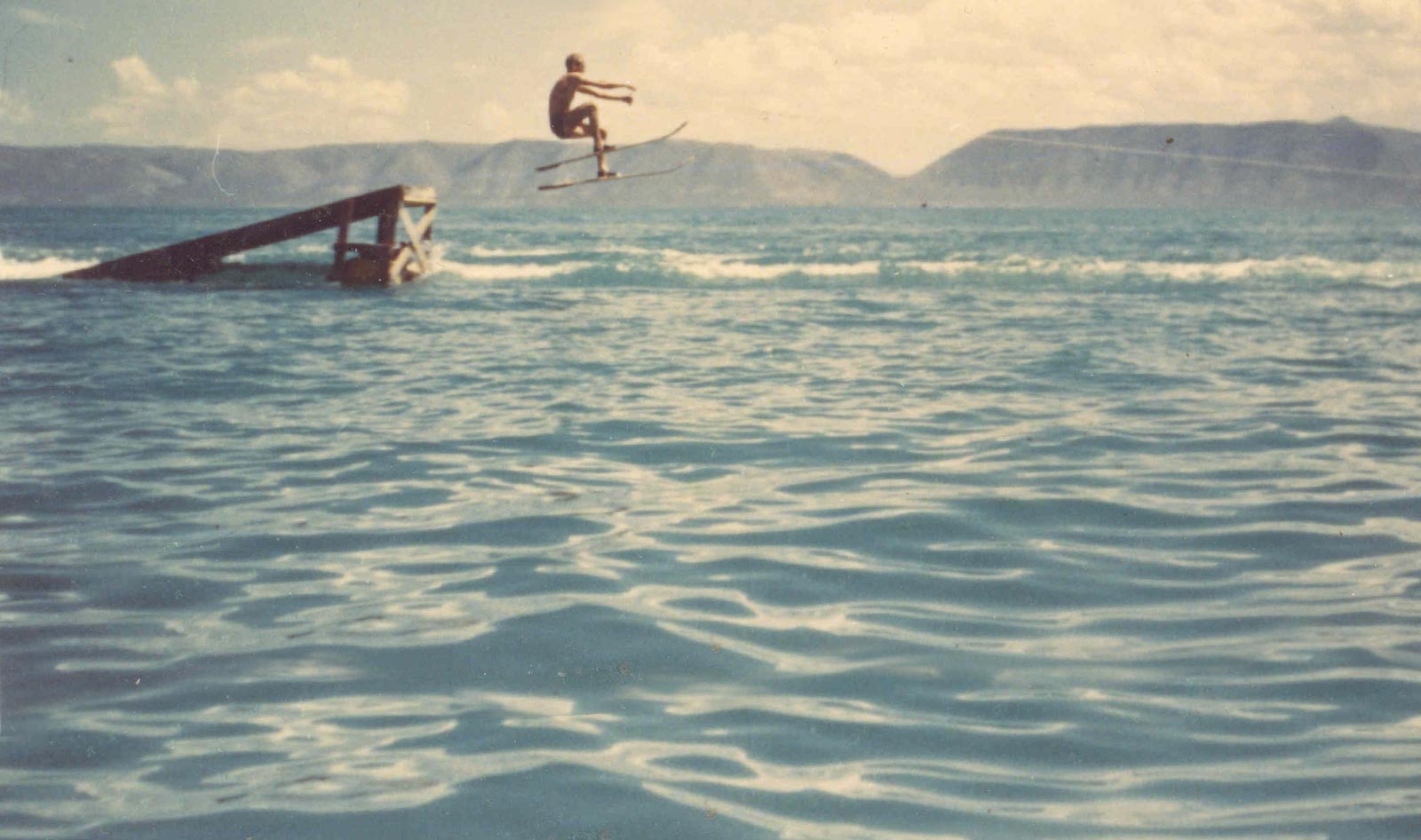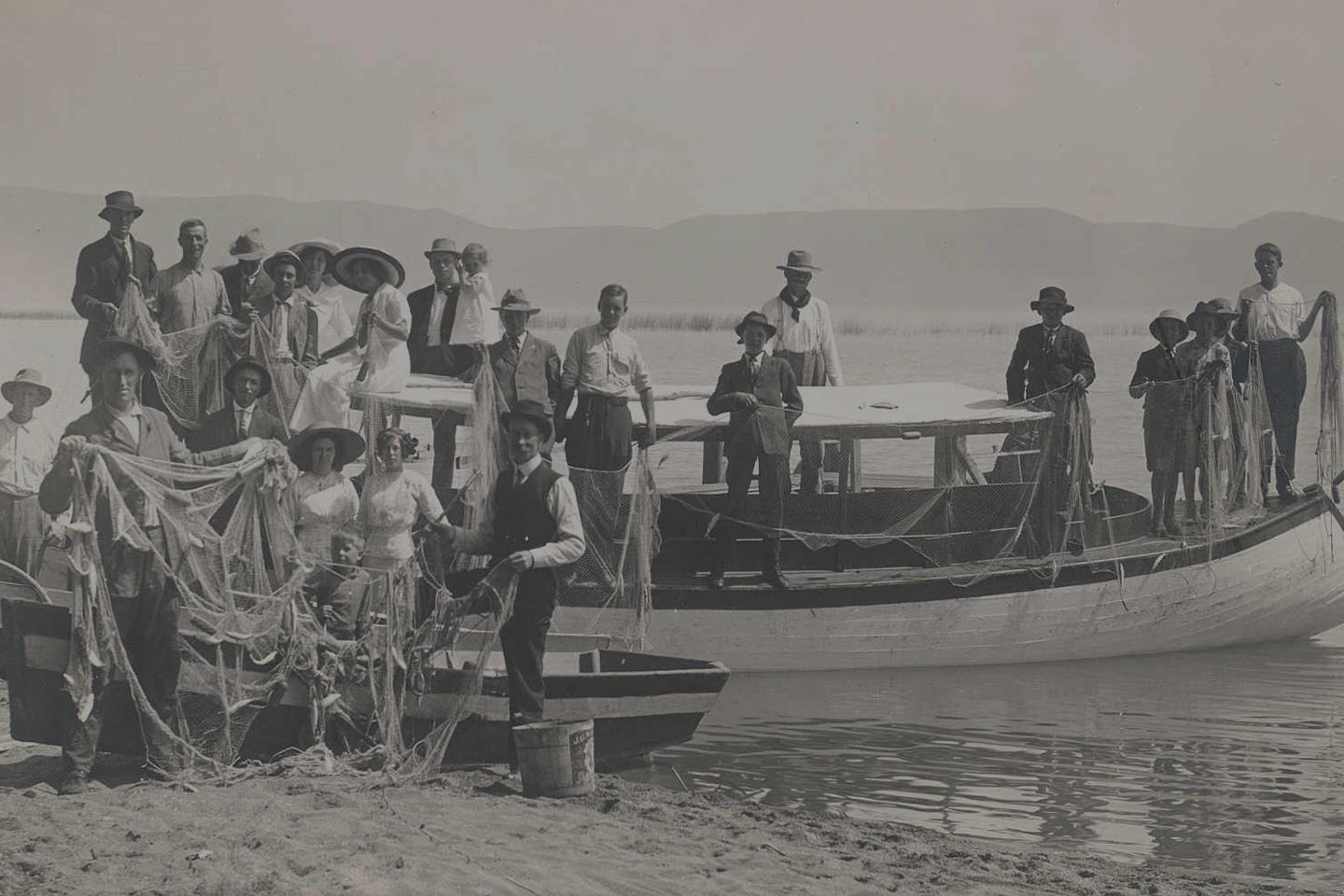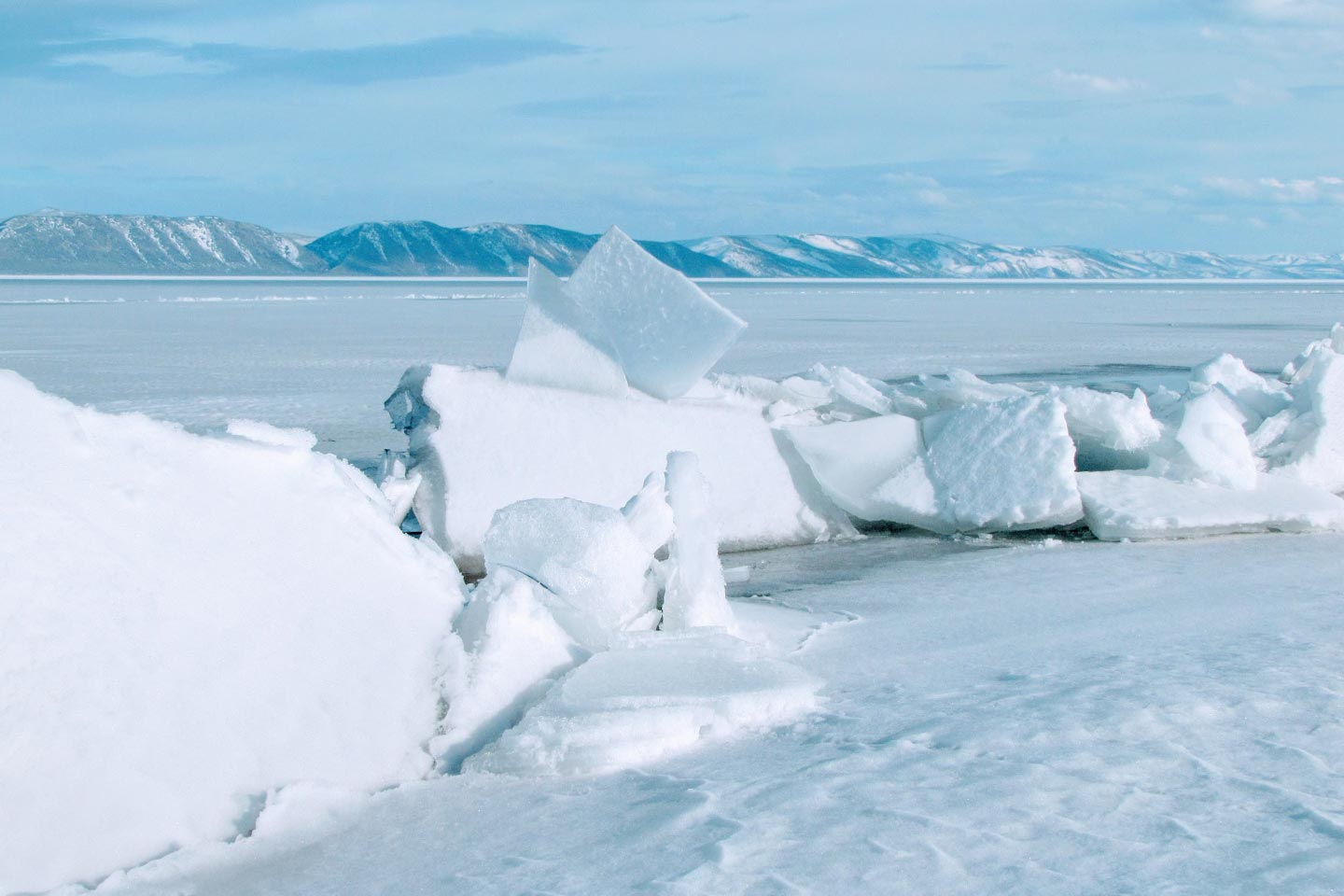The Way it Was
Bear Lake has existed for well over a quarter of a million years, during which time earth’s tectonic movements, icing up and melting out, effected the flows and paths of the river. At times, the river was trapped in the valley and backing up to fill in to the whole of the lake valley, only to break through again and continue on its course.
Over 10,000 year ago, the natural forces of of the lake’s currents, wind, waves and ice combined to isolate this big lake – Bear Lake. A berm formed separating it from the waters that would flood in from the river and the marsh created by it.
When European trappers and explorers discovered this beautiful lake they described it as a “slate of glass” “the most beautiful anywhere” “incredible azure blue”.
This big blue lake was naturally separated from the North Lake by a natural berm of sediment and sand that had been shaped by the action of the water over many years, maintaining its elevation from the local streams and springs mountains on the east, west and south.
-
The Designs
of MenSettlement of the West led the US Government – way back-east – to also be looking at Bear Lake… as a reservoir for irrigation of these arid lands. They designated it “Utah – Idaho Reservoir Site No 1.” Meanwhile, back at the ranch… agricultural interest in the lower valleys had their eyes on Bear Lake as a place to store the runoff waters of the Bear River. They had claimed the rights to use this water on their farms; their problem was that the water came heavy in the spring runoff but in many years, the river flows dropped off by Summer’s end, when the crops were still in need. Their first attempts to divert the Bear River into Bear Lake for later releases failed various reasons.
-
Power &
IrrigationAlong came L.L. Nunn, recognizing the potential for electrical generation – hydro power – of the Bear River as it dropped from the Bear Lake Valley at an elevation of 5920 to the Great Salt Lake at approximately 4500 feet. But to make it all work would require controlling the river – to do that they needed Bear Lake. The federal government never followed through on their plans and eventually, in 1907, granted rights to Nunn’s Telluride Power Company, but only after he had struck a deal to provide the irrigation needs.
Key to this project was the Lifton Pumping Station. A “dam” was not built up, but pumps were sunk down in order to pull Bear Lake water up and out. The work also included a diversion dam to divert all of the Bear River into canals, inlet and outlet structures in order to then refill Bear Lake with the spring runoff.
-
Plans of Mice
and MenThe project was completed by 1916. The first few years of this grand project, the annual water supply remained generally good and the lake was able to be refilled. The Intermountain-West was coming of age and the demand for electricity climbed. By 1925 water releases were outpacing the resupply. The lake dropped quickly and stayed low. The drought of the 1930’s set in – the Dust Bowl years, causing an even greater irrigation demand.
Bear Lake elevation hit the bottom of pumps 5902. Vast tracts of lakebed were left bone dry for many years. It didn’t take long for things to go awry. The double demand sent the lake levels tumbling down, reaching 5902 – the bottom of the storage pool by 1935
-
But… What about
Bear Lake?During this time and all the many discussions, there seems to have been no consideration given to what these changes would mean for the Bear Lake, the lands that exposed, nor the people’s lives and livelihoods that depended on it. Large areas of lake bed did not see water for over 25 years. The once thriving resorts were now failing. Some may have spoken up to defend the lake, but the only voices heard were for Power and Irrigation.
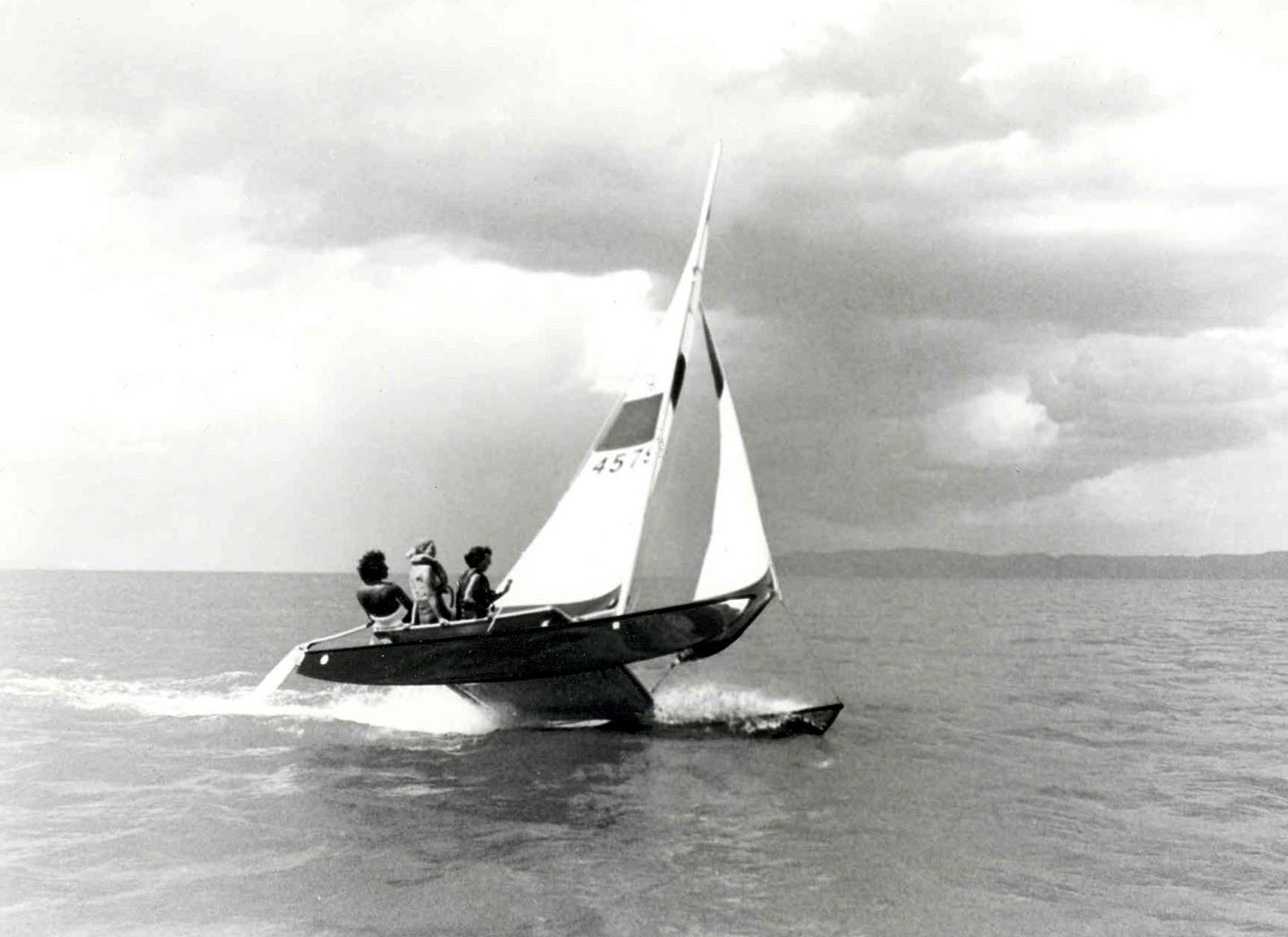
The Greatest Generation
After 1945, as the soldiers World War II returned home so, finally, did the waters of Bear Lake. The peace and prosperity of the post-war years created a new interest in the shores of Bear Lake as a place to build a summer cabin or take a family vacation. Small lakeside motels cropped up. Recreational boat ownership soared. Public parks and marinas were rare but Bear Lake was a paradise where one could launch a boat right from the back door.
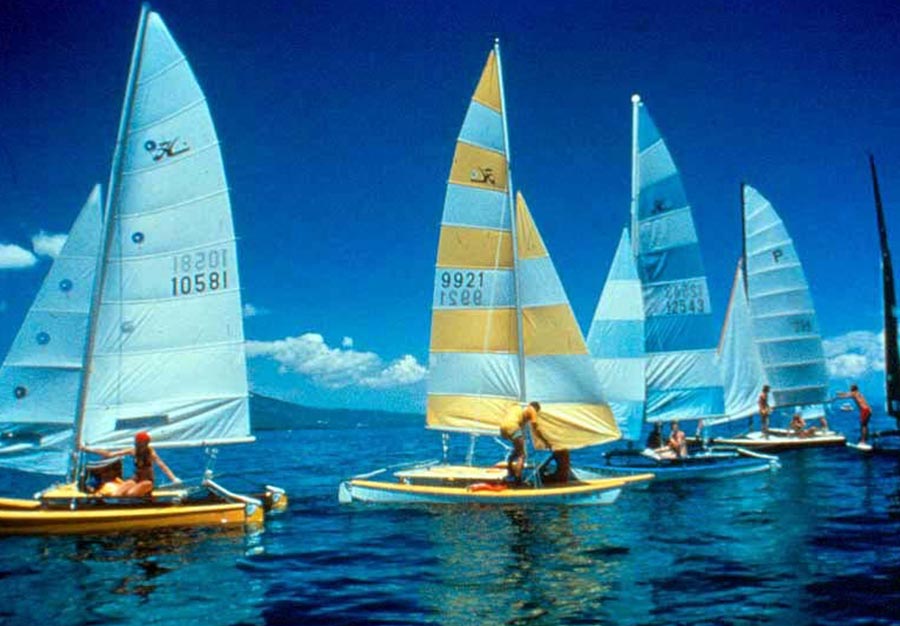
The Wet Years
Much of the 60’s thru the 80’s we’re wet years keeping the lake relatively high. The ups and downs were short lived. Marina’s could be used, boats launched, docks were actually in water. The wind and waves cleaned the lakebed and lake attempted to reclaim its turf. Early 80’s were the years when the streets of Salt Lake City were turned into river channels and the Great Salt Lake so full that the huge pumps were installed to push water out into the desert and prevent flooding to private lands and business.
A Different Story
The 90s were a different story, by 1992 the lake had dropped to near bottom of the storage capacity again. BearLakers were worried, not just about the low water level, but also the drastic changes that were happening on the lake bed and the shoreline. What were once sandy beaches on firm ground, we’re now being covered by mud and sediments with vegetation taking over.
Publicly expressing their concerns, wondering if there was any official plan or policy to protect the natural resource and the character of Bear Lake – they ran into a brick wall. It seemed that the only interest that mattered were those the power generators and irrigation demand.
Any concerns about the lake itself was seen as a threat to that current power structure and use. There were meetings with politicians, public Summits, private audiences, and maybe a sympathetic ear but no one was willing to stand up and say yes, the lake matters. Concerned citizens working through different circles finally converged to join forces and committed to take action and …Bear Lake Watch was born. Read the Bear Lake Watch Story, in Merlin’s own words by clicking the button below
Read Story-
Time for Action
The low water was also a big problem for the downstream irrigators. The currents and wave action move sand across the channel to the pumps, making it impossible for the power company to deliver the last of the water they wanted. UP&L obtained a permit from the Corp of Engineers to dredge the entrance to Camp Lifton – down to 5890. That is 12 feet below the historic low elevation! The Bear Lake Watch group, judging that this was an illegal action, filed suit against Corp of Engineers and the EPA for issuing improper permits for the dredging. Although it was against the federal agencies, it brought the power company and the irrigators to the table as interveners to seek a resolution.
-
Settlement
AgreementThere was a lot of tension and strife but in the end, a settlement agreement was signed that brought benefits to all parties, preserving power & irrigation interests, while acknowledging the need to protect and preserve Bear Lake. The Bear Lake Settlement Agreement signed in 1995, provided for the withdrawal of litigation, a reduction in the water allocation when the lake was low, a strict adherence to the delivery procedures and contracts, improved accounting between the states plus it created a forum for the parties to address their issues.
-
Celebrating 20+
Years of SuccessCelebrating the 20-year and it is still being praised for saving water, creating the peace and building relationships that will be the basis for evolving into a new standard of water management in the west. Storage water still allocated and delivered per the Bear Lake Settlement Agreement (1995) and the Amended Bear Lake Settlement Agreement (2004).
The agreements stipulate
- • Irrigation allocations are based on forecast lake levels.
- • Bear Lake Recovery schedule call for reduced allocation as elevation lowers.
- • Bear Lake Preservation Advisory Committee to discuss Bear Lake and Bear River issues.
- • Called for a bi-state accounting model, which has been created and serves a guide for accurate management of Bear Lake storage water.
-
Remember the
Public TrustAt Statehood, Bear Lake became a “public trust” of the states. Each state interprets this slightly different, but the principle is the same. The water-body is granted to the people, the state government is entrusted with its management “for the benefit of the people”. Even though the power company was granted the storage right to the top 21 feet of Bear Lake, they were not “given” the lake. It is ultimately the right and responsibility of the people of the states of Utah and Idaho to see that Bear Lake maintain its wonderful and unique characteristics into the future.
